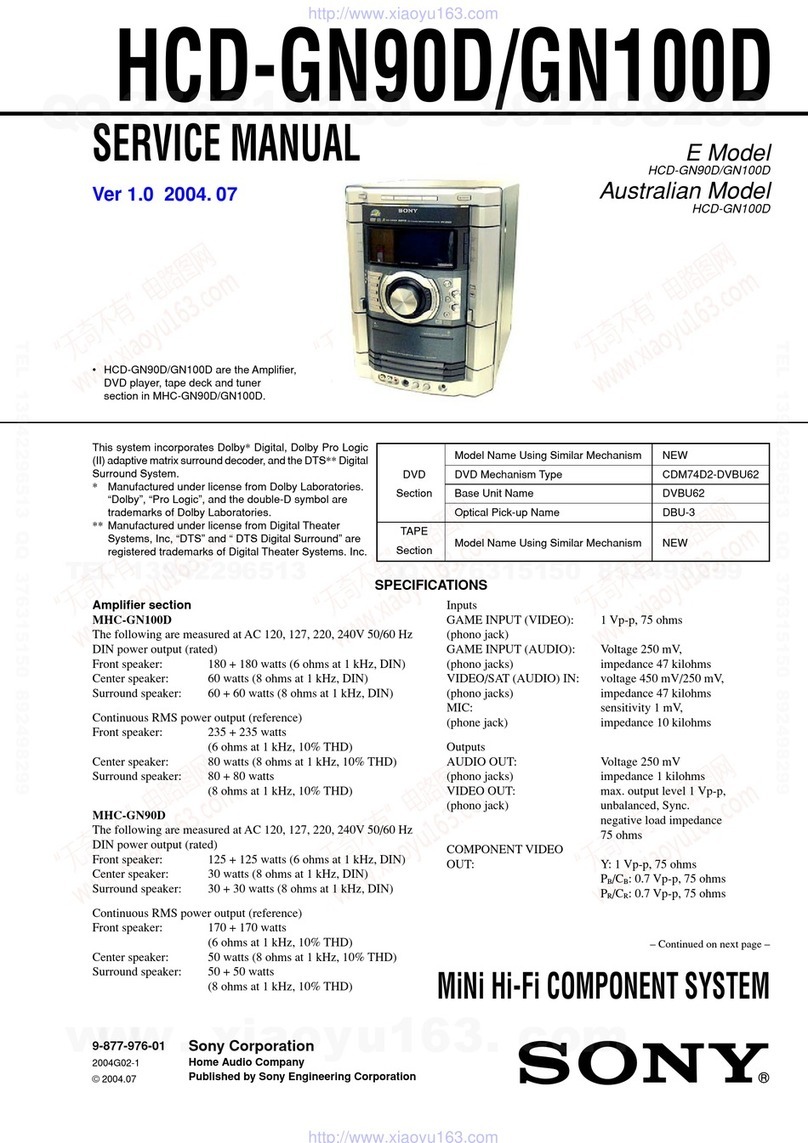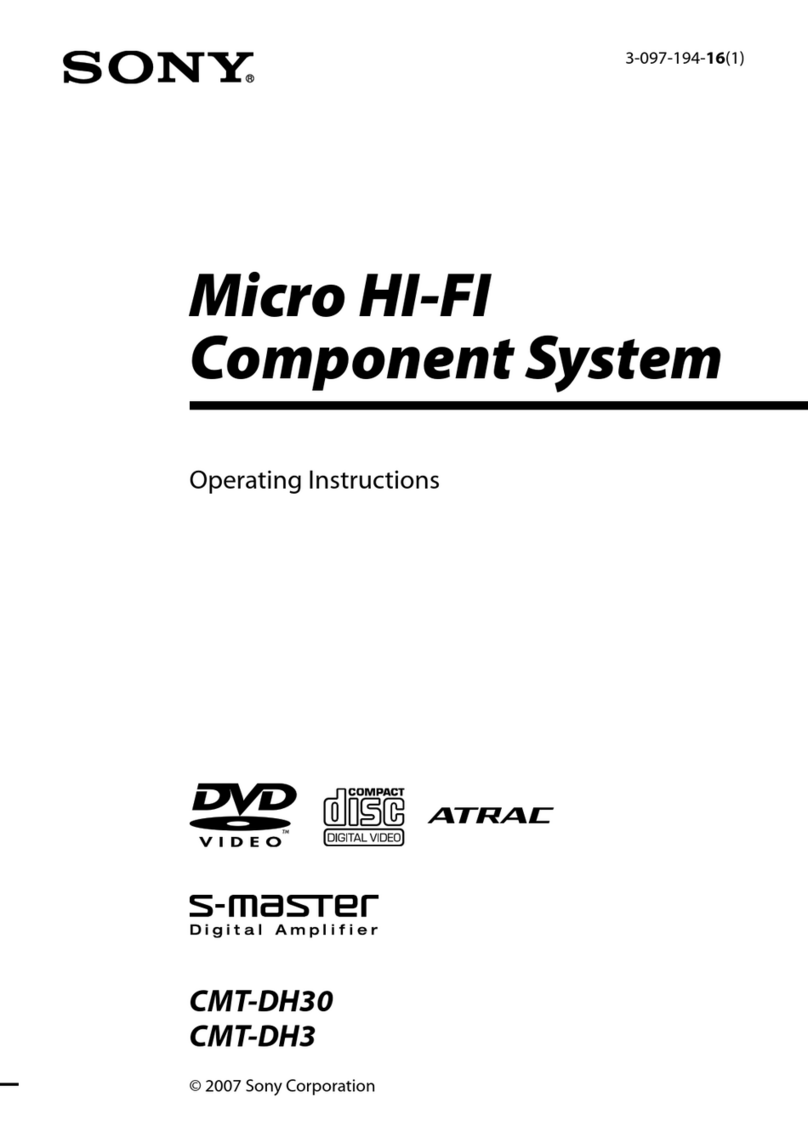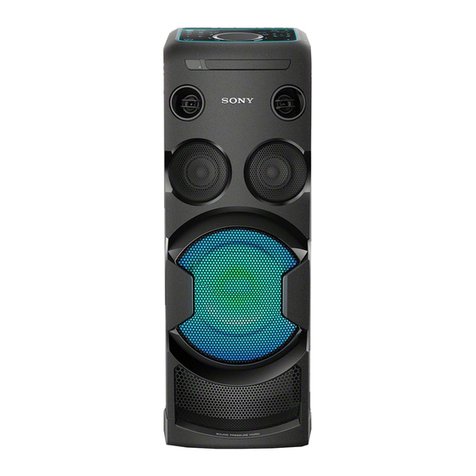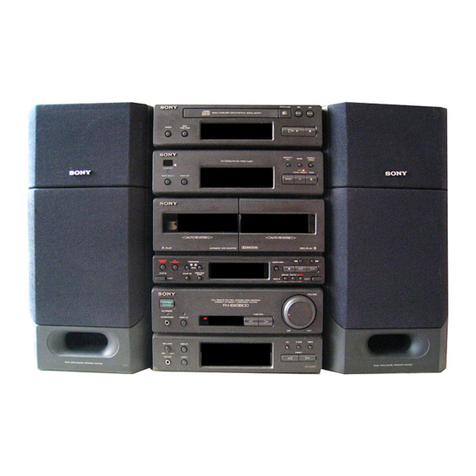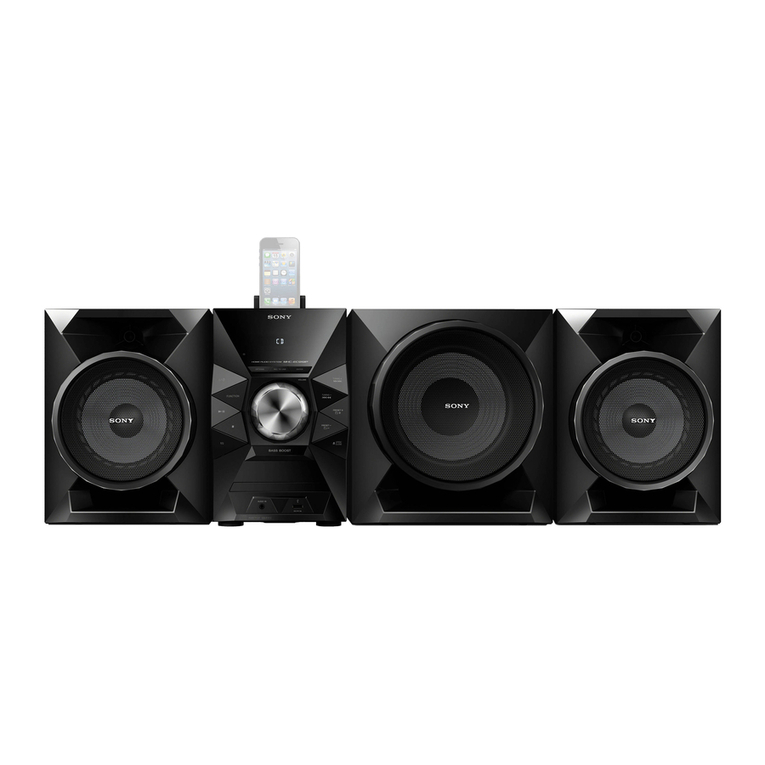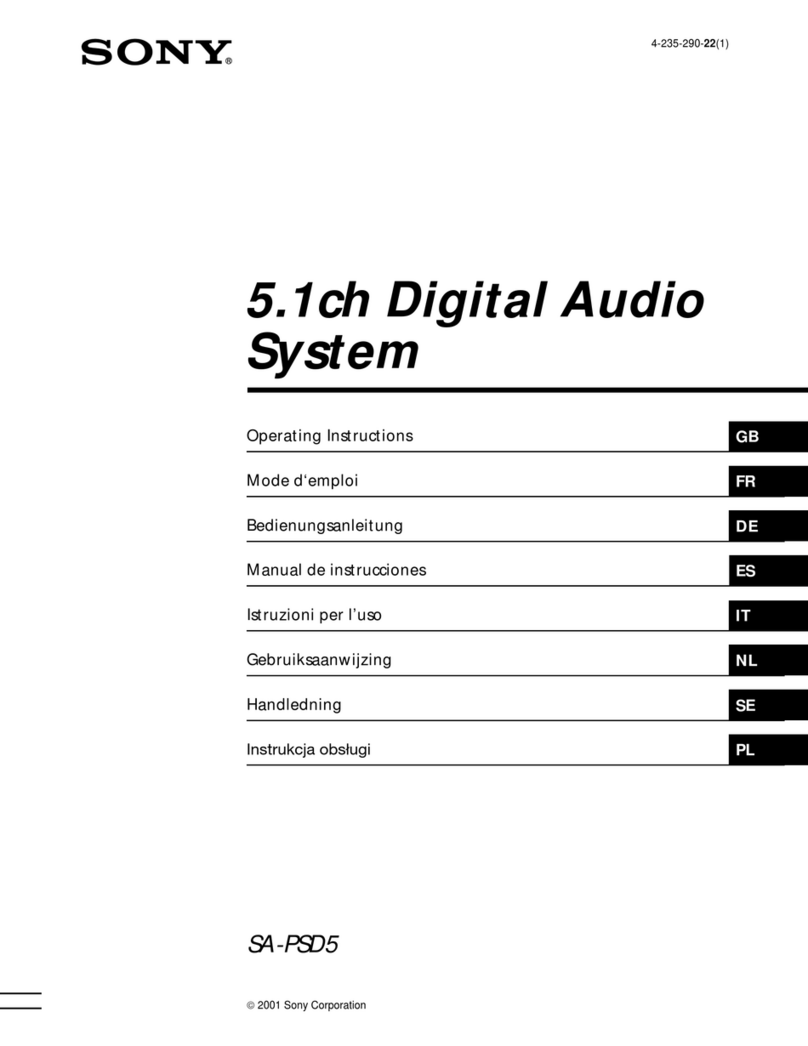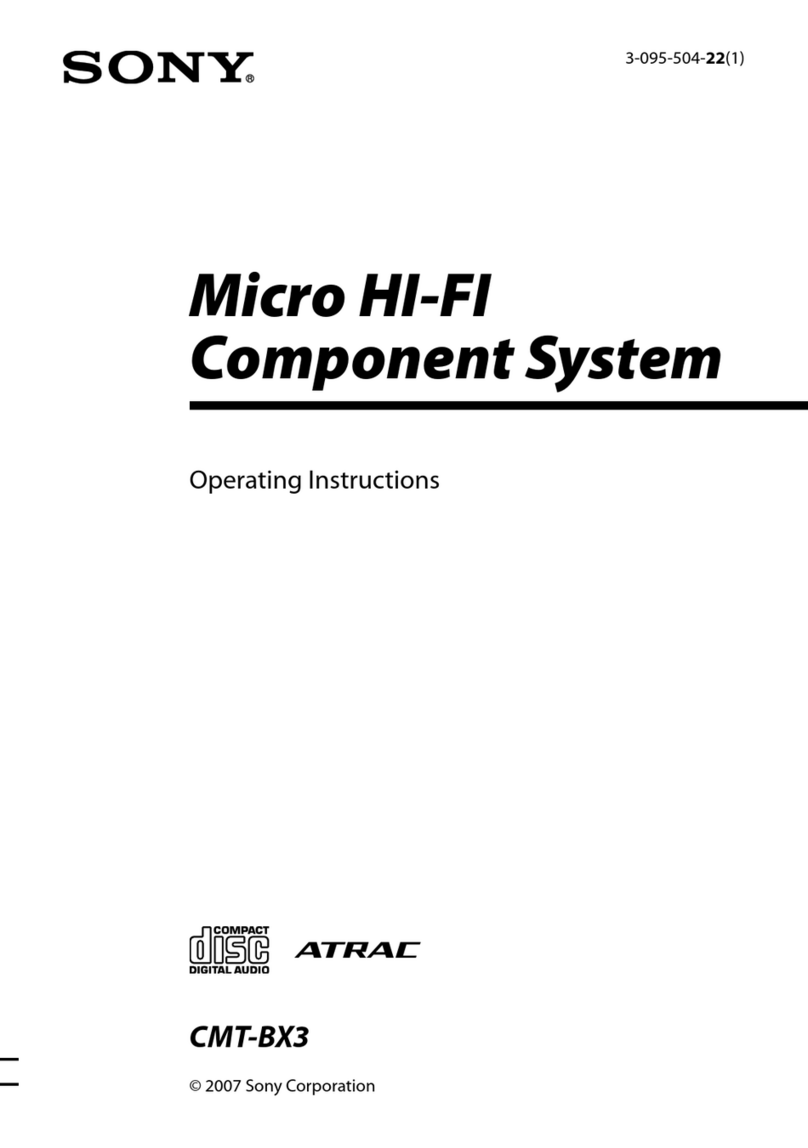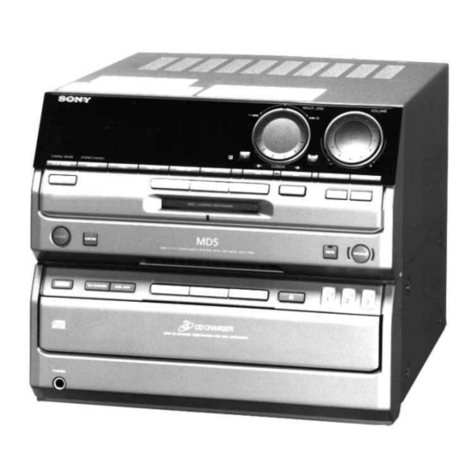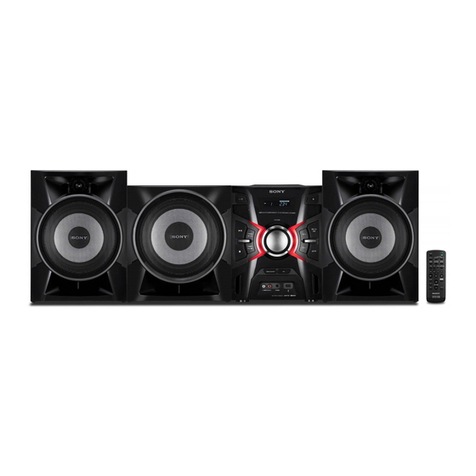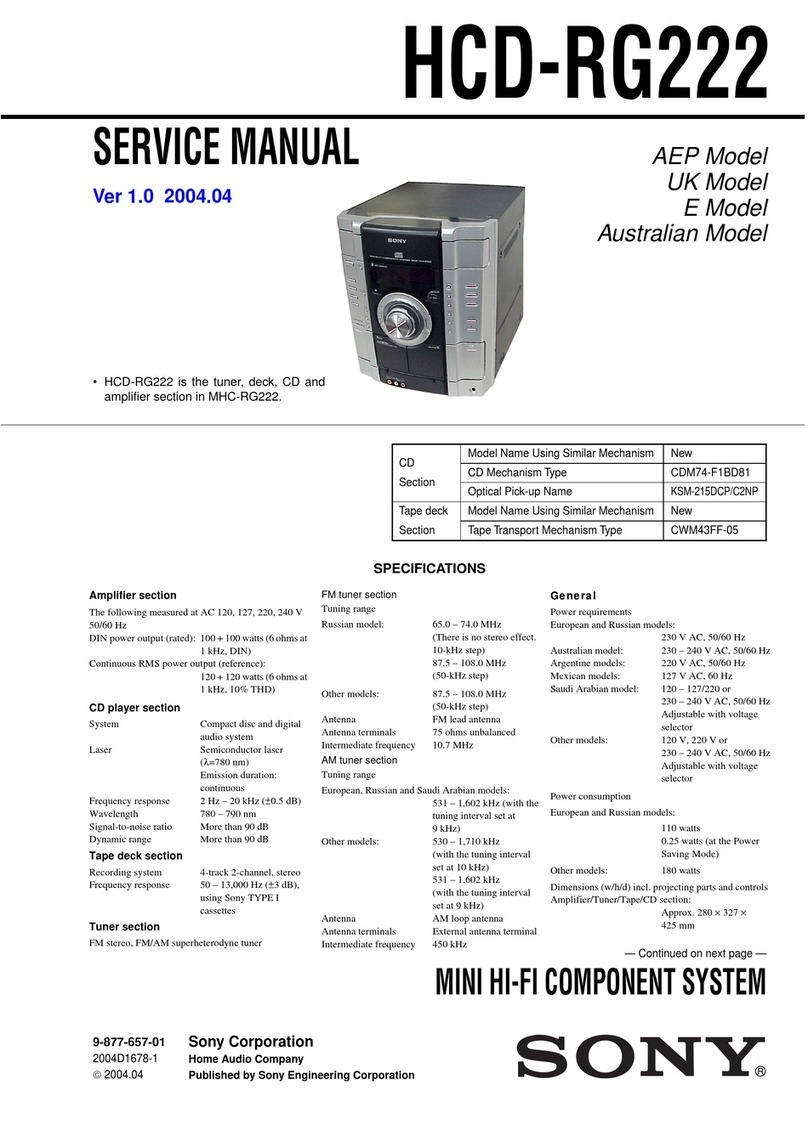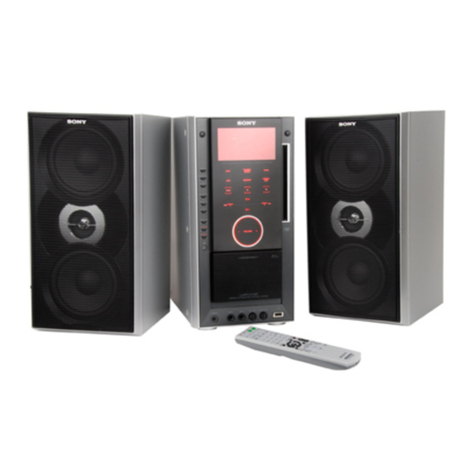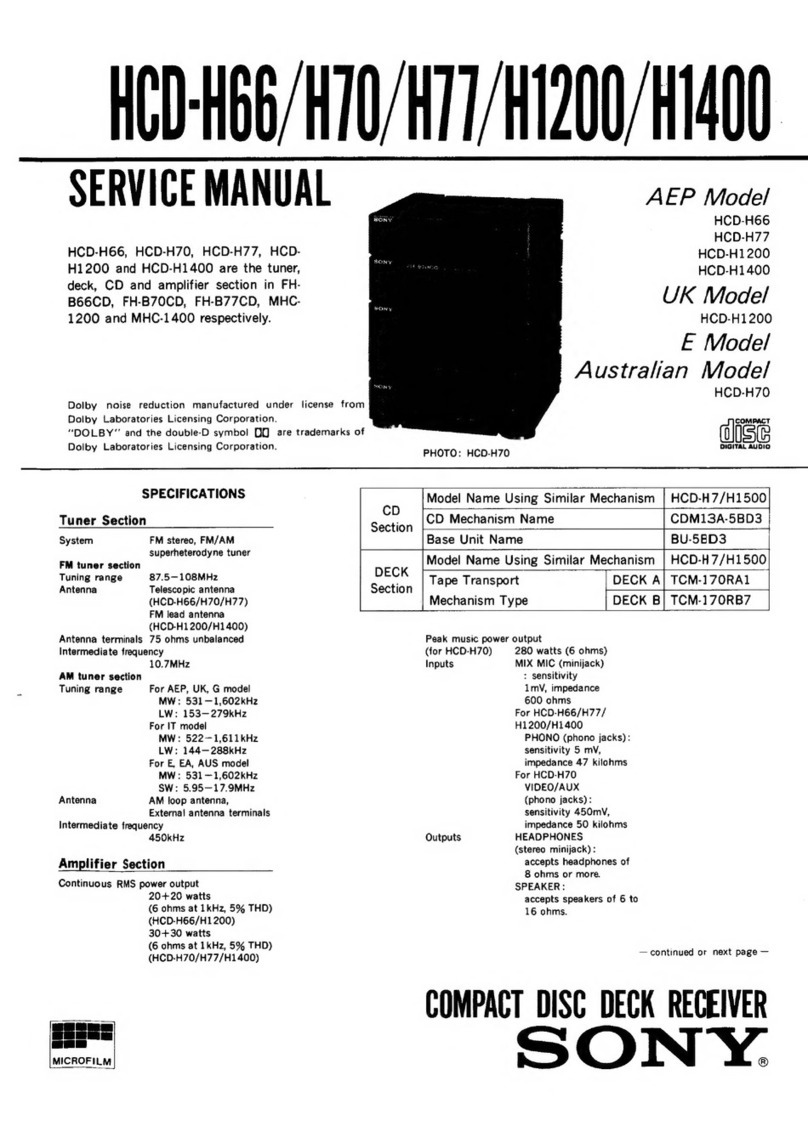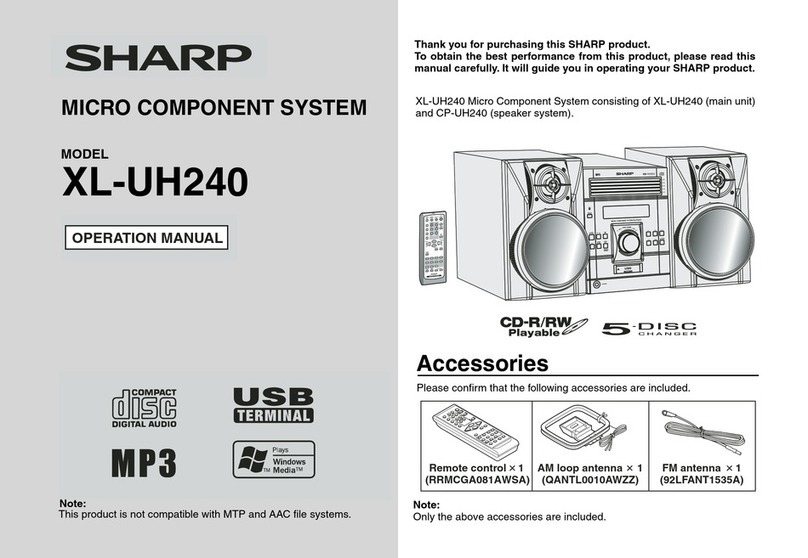MINI Hi-Fi COMPONENT SYSTEM
MICROFILM
AEP Model
UK Model
E Model
SPECIFICATIONS
SERVICE MANUAL
HCD-MD313
HCD-MD313 is the amplifier, CD, MD and
tuner section in DHC-MD313.
Model Name Using Similar Mechanism HCD-T1
CD CD Mechanism Type
CDM13C-5BD19
Section Base Unit Name BU-5BD19
Optical Pick-up Name KSS-213B/K-N
Model Name Using Similar Mechanism MDS-MX1
MD MD Mechanism Type MDM-3D
Section Optical Pick-up Name KMS-260A/J1N
US and foreign patents licensed from Dolby
Laboratories Licensing Corporation.
– Continued on next page –
Amplifier section
European model:
DIN power output 25 + 25 watts (6 ohms at 1 kHz, DIN)
Continuous RMS power output
30+30 watts
(6 ohms at 1 kHz, 10% THD)
Music power output 50 +50 watts
Other models:
Peak music power output 400 watts
Continuous RMS power output
25 + 25 watts (6 ohms at 1 kHz, 10% THD)
Inputs TAPE IN (phono jacks):
voltage 250 mV/125 mV, impedance 47 kilohms
Outputs TAPE OUT (phono jacks):
voltage 250 mV impedance 1 kilohms
PHONES (stereo phone jack):
accepts headphones of 8 ohms or more.
SPEAKER: accepts impedance of 6 to 16 ohms.
CD player section
System Compact disc and digital audio system
Laser Semiconductor laser (λ= 780 nm)
Emission duration: continuous
Laser output Max. 44.6 µW*
*This output is the value measured at a distance
of 200 mm from the objective lens surface on the
Optical Pick-up Block with a 7 mm aperture.
Frequency response 2 Hz – 20 kHz
MD deck section
System MiniDisc digital audio system
Laser Semiconductor laser (λ= 780 nm)
Emission duration: continuous
Laser output Max. 44.6 µW*
*This output is the value measured at a distance
of 200 mm from the objective lens surface on the
Optical Pick-up Block with a 7 mm aperture.
Recording time 74 minutes max. (using MDW-74)
Sampling frequency 44.1 kHz
Frequency response 5 Hz to 20 kHz
Tuner section
FM stereo, FM/AM superheterodyne tuner
FM tuner section
Tuning range 87.5 – 108.0 MHz (50 kHz step)
Aerial FM lead aerial
Aerial terminals 75 ohms unbalanced
Intermediate frequency 10.7 MHz

